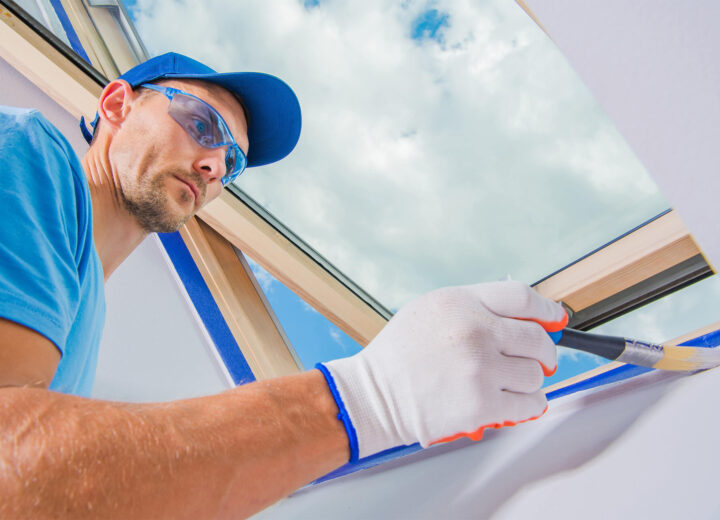 If you’ve ever completed a major residential painting project, you know the satisfaction of standing back and admiring the finished product of your labor. You also know the overwhelming sensation when you see the mess that finishing your product has made. When it comes to major painting projects, the clean-up aspect is an important element you don’t want to overlook.
If you’ve ever completed a major residential painting project, you know the satisfaction of standing back and admiring the finished product of your labor. You also know the overwhelming sensation when you see the mess that finishing your product has made. When it comes to major painting projects, the clean-up aspect is an important element you don’t want to overlook.
Even though you may be careful and meticulous when you paint, accidents happen. Even if you manage to avoid any drips or spills, there’s still going to be clean up to worry about. It may seem daunting to know what to do with any leftover paint and knowing how to properly clean up a residential painting project. But we’ve outlined some good basic principals for how to handle the clean up of any project you may encounter.
Spills, drips, and splatter
No matter how careful you are during your residential painting project, there are bound to be spills, drips, or splatters. It’s an issue every amateur painter faces and with the right tools, you can easily clean up these painting mishaps and get on with your clean up.
It’s important to keep clean rags or cloths on hand to quickly wipe up any spills or drips.
Oil based paints require either paint thinner or mechanic’s hand cleaner, depending on the surface that paint has spilled on. Latex based paints only require water for effective clean up.
For carpet spills, don’t panic! There are ways to clean up carpet spills. Depending on how much paint is spilled, you’ll want to scoop or scrap as much paint as you can off the carpeted surface onto a tarp or into a paint pan. Once you’ve done that, massage either water or paint thinner into the affected areas, depending on what type of paint has been spilled. Blot up as much of the water or paint thinner as you can. Then, you’ll want to treat the carpet with a professional carpet cleaner.
If you’re doing a DIY residential painting project in an area that has carpeting, we highly recommend renting or purchasing a professional carpet cleaning system so that any spills can be handled swiftly, minimizing the chance of unsightly stains.
If your spill occurs on other flooring, you would follow the steps outlined above. Scoop up as much paint as possible and then blot it up with your clean rags. You can clean paint spilled in grout lines or between hardwood flooring using wire brushes or even an old toothbrush.
It’s not always possible to avoid spills on your clothes or skin. If your paint is latex based, all you’ll need is to scrub the skin or clothing with water until the water runs clear. For latex paints, try using a mechanic’s hand cleanser.
Cleaning and drying brushes
Your brushes can last a long time if you take care of them. Using gloves, work either warm, soapy water or paint thinner through the bristles of your paint brush under running water. Massage the bristles until they rinse clean. Set the brushes aside to dry before using your fingers or a comb to brush out any bristles that are stuck together. Finish drying the bristles with a clean, dry rag and store the brush safely.
Remaining paint
Storing your paint is easy and can make any future touch-ups easier. You can either keep it in the can and gently hammer the lid until it’s secure or you can transfer your paint to a different container. Either way, make sure the paint is sealed inside its container and labeled on the outside the any pertinent information, including the room or rooms the paint was used in.
Additional cleaning guidelines
- Be careful as you remove your drop cloths – you don’t want any paint to drip or spill while you’re removing your materials.
- Be cautious about tracking any paint back into the house on your shoes once you’ve disposed of materials.
- Clean up spills and splatters as you go to avoid drying paint
- If you discover dried paint on carpet after you’ve finished, you can carefully pick or cut the dried paint out of the carpet using your nails, scissors, or pliers.
Proper clean up is an important part of any residential painting project. There are plenty of steps involved that require attention to detail in order to prevent any damage to the other areas of your home. Of course, you don’t have to do any of this alone. Consider hiring professional painters, who will handle your project from planning to clean up.
{{cta(‘9356bbf0-d14e-480d-988b-2427a4af661a’)}}






